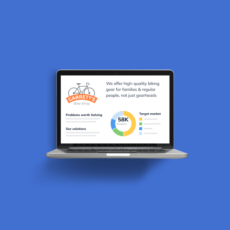Kody Wirth is a content writer and SEO specialist for Palo Alto Software—the creator's of Bplans and LivePlan. He has 3+ years experience covering small business topics and runs a part-time content writing service in his spare time.
Business Plan and Pitch Competition Guide
1 min. read
Updated April 8, 2024
Pitch competitions are more than an opportunity to win funding; they’re a valuable platform to practice and perfect your business pitch. By participating, you gain critical experience presenting your ideas, receive expert feedback, and engage with potential investors and partners.
This guide is designed to help you prepare for these business plan competitions. Whether you’re an aspiring entrepreneur or an experienced business owner—here is what you need to know about pitch competitions.
If you need to develop your pitch deck or elevator pitch, check out our other guides.
What is a pitch competition?
A pitch or business plan competition is an event where people with business ideas or who are running early-stage startups get the chance to present to a group of judges. Entrepreneurs need to cover their business model, target market, financial plans, and other vital areas of their businesses within a fixed time limit.
The judges, typically experts in business and investment, evaluate and provide feedback on these presentations. The best pitches, as determined by the judges, may receive prizes often in the form of funding, mentorship, or resources to help develop or scale their businesses.
How to prepare for a pitch competition
Are you participating in your first startup pitch or business plan contest? Check out these guides to refine your pitch and better understand what it takes to succeed.
Pitch competition resources and tools
Resources and templates to help you successfully pitch your business idea.










